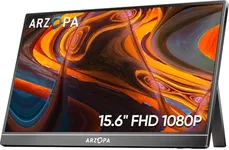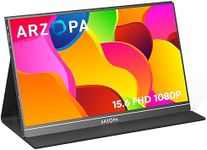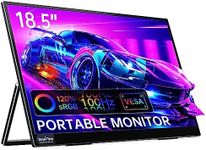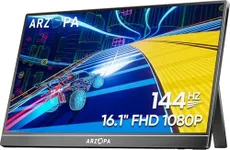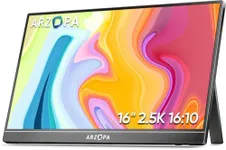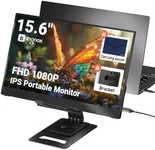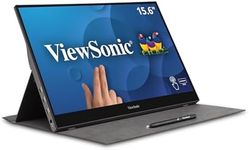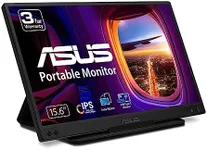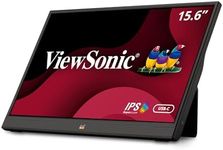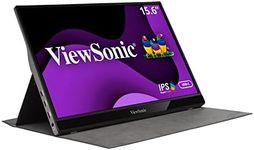Buying Guide for the Best Portable Monitor For Mac
Choosing a portable monitor for your Mac can make your workflow more flexible, whether you’re working on the go, need a second screen for productivity, or want a larger display for entertainment. The key is to find a monitor that matches your usage habits, is easy to carry, and connects seamlessly with your Mac. Understanding the main specifications will help you make a choice that fits your needs and ensures a smooth experience.Screen SizeScreen size refers to the diagonal measurement of the display, usually in inches. This is important because it affects both portability and usability. Smaller screens (around 13-14 inches) are easier to carry and fit in most bags, making them ideal for frequent travelers or those who prioritize portability. Medium sizes (15-16 inches) offer a balance between screen real estate and portability, suitable for users who want more space for multitasking but still need to move around. Larger screens (17 inches and above) provide a more immersive experience and are better for tasks like design or watching videos, but they are bulkier and less convenient to carry. Think about how often you’ll travel with the monitor and what you’ll use it for to decide the right size.
ResolutionResolution is the number of pixels the screen displays, which affects how sharp and clear images and text appear. Common resolutions include Full HD (1920x1080), Quad HD (2560x1440), and 4K (3840x2160). Full HD is usually enough for basic tasks like browsing and document editing, and it helps save battery life. Higher resolutions like Quad HD or 4K are better for photo editing, design, or if you want crisper visuals, but they may use more power and can be more expensive. Choose a resolution that matches your typical activities and how much detail you need.
ConnectivityConnectivity refers to the types of ports and connections the monitor offers, which is crucial for compatibility with your Mac. The most common and convenient option is USB-C, which can carry both power and video with a single cable, making setup simple and tidy. Some monitors also offer HDMI or mini DisplayPort, which may require adapters for Macs. If you want a hassle-free experience, look for a monitor with native USB-C support and check that it’s compatible with your Mac model. Consider what devices you might want to connect in the future as well.
Weight and PortabilityWeight and portability determine how easy it is to carry the monitor with you. Lightweight monitors (under 2 pounds) are best for frequent travelers or those who need to move between locations often. Heavier monitors may offer sturdier builds or larger screens but can be cumbersome to transport. Also, consider the thickness and whether the monitor comes with a protective case or stand. Think about your daily routine and how much you’re willing to carry to find the right balance.
Power SourceThe power source describes how the monitor is powered. Some portable monitors draw power directly from your Mac via USB-C, which is convenient and reduces cable clutter. Others may require a separate power adapter, which can be less convenient when traveling. If you want maximum portability and fewer cables, look for a monitor that can run solely off your Mac’s USB-C port. However, if you need a larger or brighter screen, an external power source might be necessary.
Display Type and BrightnessDisplay type (such as IPS or OLED) and brightness (measured in nits) affect how the screen looks. IPS panels offer good color accuracy and wide viewing angles, making them suitable for most users. OLED screens provide deeper blacks and more vibrant colors but are less common and can be more expensive. Brightness is important if you plan to use the monitor in bright environments; 250-300 nits is fine for indoor use, while 400 nits or more is better for outdoor or well-lit spaces. Consider where you’ll use the monitor and whether color accuracy or brightness is more important for your tasks.
